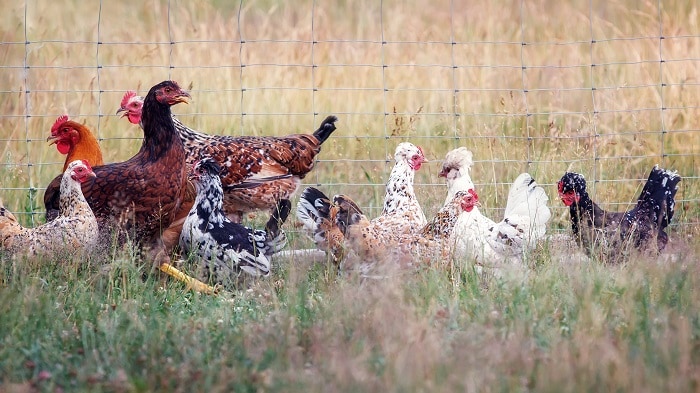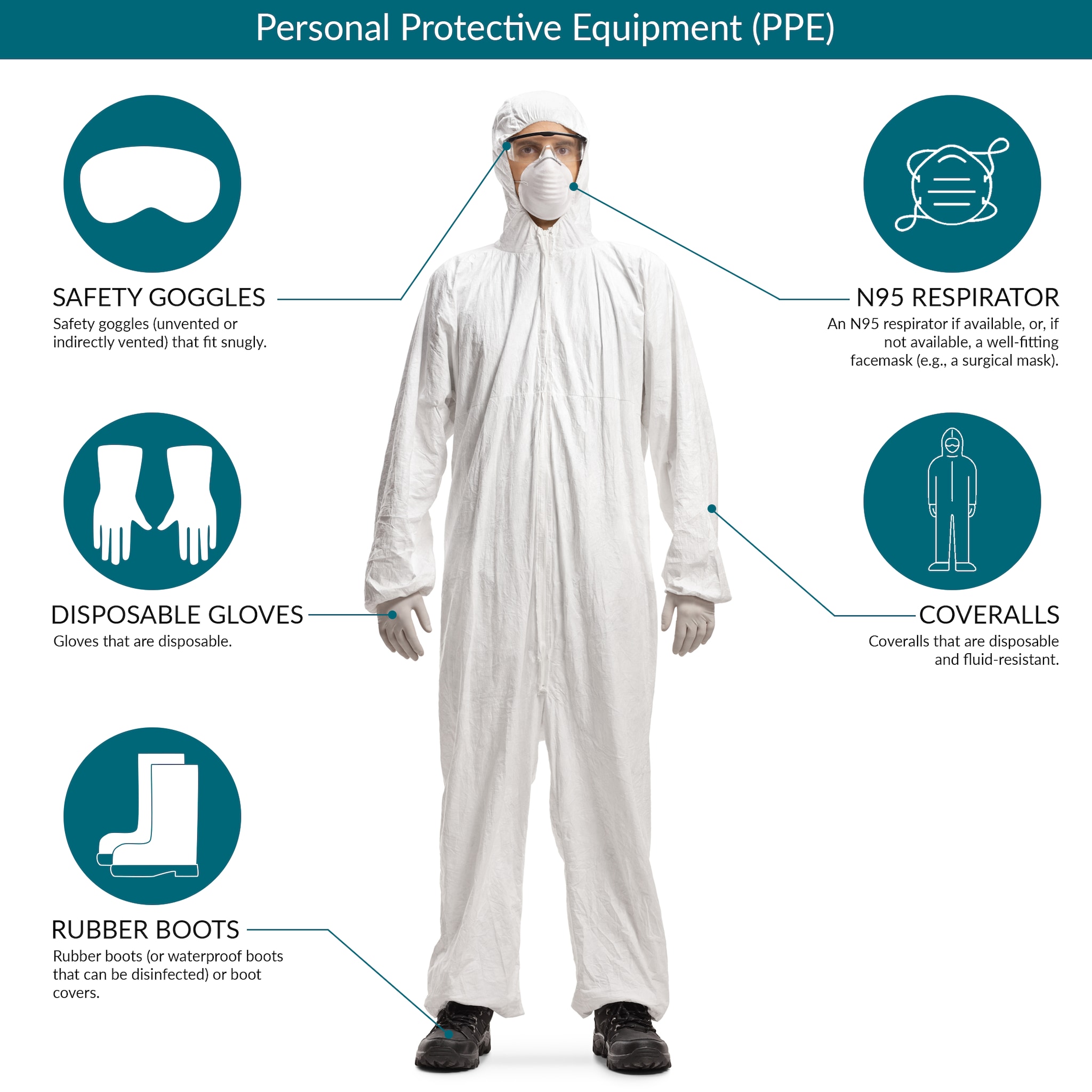What to know
- The recommendation to wear PPE when in contaminated areas (primary poultry housing: coops, runs, barns, etc.) depends on whether a 150-day fallow is used for virus elimination after flock depopulation.

Steps to protect yourself
If birds in your flock have avian (bird) influenza (flu) A virus infection, or you suspect they might, take the following actions to protect yourself:
- Don't touch sick or dead birds, their feces or litter, or any surface or water source (for example, ponds, waterers, buckets, pans, troughs) that might be contaminated with their saliva, feces, or any other bodily fluids without wearing personal protective equipment (PPE).
- Wear PPE when around sick or dead birds.
- As best as possible, during depopulation and while cleaning and disinfecting contaminated premises, avoid stirring up dust, bird waste, and feathers to prevent virus from dispersing into the air.
Once bird flu infection is confirmed within a flock and premises, the U.S. Department of Agriculture (USDA) Animal Plant Health Inspection Service (APHIS) recommends that backyard owners continue to wear PPE when in contaminated areas until there are no longer infected birds, eggs, feces, or contaminated litter on the property. The recommendation to wear PPE when in contaminated areas (primary poultry housing: coops, runs, barns, etc.) depends on whether a 150-day fallow is used for virus elimination after flock depopulation.
Cleaning and disinfecting
USDA has information on cleaning and disinfecting or fallowing of premises that were contaminated with highly pathogenic avian influenza virus and information on good biosecurity practices:
Recommended PPE
Put on PPE before you go into the coop or poultry environment. Do not wear or store PPE in your home after it has been worn in your coop and before it has been cleaned and disinfected. Put on and take off PPE in separate clean areas, if possible.

PPE should include:
- Safety goggles (unvented or indirectly vented) that fit snugly,
- gloves that are disposable,
- rubber boots (or waterproof boots that can be disinfected) or boot covers,
- an N95 respirator if available, or, if not available, a well-fitting facemask (e.g., a surgical mask)
- coveralls that are disposable and fluid-resistant,
- and disposable head cover or hair cover.
You can buy these items online or at many retail, hardware, or feed stores.
When wearing PPE:
- Wear well-fitting PPE,
- do not touch your eyes, mouth, or nose
- do not touch PPE until you are taking it off,
- do not eat, drink or smoke while wearing PPE, and
- only wear PPE while you are in your coop or poultry environment. Do not wear used protective gear into your home.
Removing, cleaning, and disposing of PPE:
- After use, clean or throw away all PPE that was worn in your coop or poultry environment, or around your birds.
Safely remove PPE in this order:
- Clean and disinfect boots,
- remove boots,
- remove and dispose of the coveralls,
- remove and dispose of gloves,
- wash hands with soap and water,
- remove goggles, head cover, and respirator [ 716 KB, 1 Page, 11.33" × 14.67"],
- clean and disinfect reusable goggles,
- dispose respirator,
- wash hands with soap and water again.
- For items that need to be cleaned, clean with soap and water until visible dirt is removed, and then disinfect items with an EPA-approved disinfectant that has label claims against influenza A viruses according to the manufacturer's instructions.
- Clean your clothing worn underneath PPE. Clothes should be washed using detergent. A disinfectant could be added as an additional level of caution. Clothes should then be dried on high heat. Do not wear any clothing worn when in contact with infected birds again before washing.
- Shower right after removing PPE and cleaning clothing.
- Self-monitor for symptoms for 10 days after the last day of exposure to potentially infected birds or contaminated materials.
- If unsure, backyard flock owners should contact USDA or the State Animal Health Official to determine the date of their last exposure (the date that disposal of infected birds, eggs, manure, and litter was completed).
